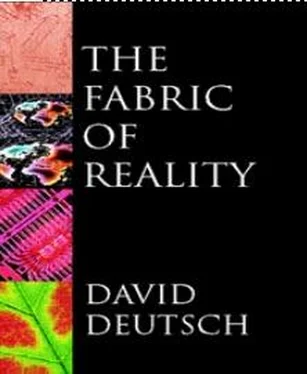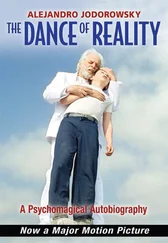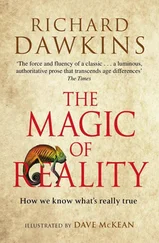David Deutch - The Fabric of Reality
Здесь есть возможность читать онлайн «David Deutch - The Fabric of Reality» весь текст электронной книги совершенно бесплатно (целиком полную версию без сокращений). В некоторых случаях можно слушать аудио, скачать через торрент в формате fb2 и присутствует краткое содержание. ISBN: , Жанр: Физика, Философия, на английском языке. Описание произведения, (предисловие) а так же отзывы посетителей доступны на портале библиотеки ЛибКат.
- Название:The Fabric of Reality
- Автор:
- Жанр:
- Год:неизвестен
- ISBN:0-7139-9061-9
- Рейтинг книги:4 / 5. Голосов: 2
-
Избранное:Добавить в избранное
- Отзывы:
-
Ваша оценка:
- 80
- 1
- 2
- 3
- 4
- 5
The Fabric of Reality: краткое содержание, описание и аннотация
Предлагаем к чтению аннотацию, описание, краткое содержание или предисловие (зависит от того, что написал сам автор книги «The Fabric of Reality»). Если вы не нашли необходимую информацию о книге — напишите в комментариях, мы постараемся отыскать её.
The Fabric of Reality — читать онлайн бесплатно полную книгу (весь текст) целиком
Ниже представлен текст книги, разбитый по страницам. Система сохранения места последней прочитанной страницы, позволяет с удобством читать онлайн бесплатно книгу «The Fabric of Reality», без необходимости каждый раз заново искать на чём Вы остановились. Поставьте закладку, и сможете в любой момент перейти на страницу, на которой закончили чтение.
Интервал:
Закладка:
Richard Dawkins’ innovation, as set out in his books The Selfish Gene and The Blind Watchmaker, is yet again the claim that the prevailing theory is true after all. He argues that none of the current objections to the unadorned Darwinian model turn out, on careful inspection, to have any substance. In other words, Dawkins claims that Darwin’s theory of evolution does provide a full explanation of the origin of biological adaptations. Dawkins elaborated Darwin’s theory in its modern form as the theory of replicators. The replicator that is best at getting itself replicated in a given environment will eventually displace all variants of itself because, by definition, they are worse at getting themselves replicated. It is not the fittest species variant that survives (Darwin had hot quite realized this) but the fittest gene variant. One consequence of this is that sometimes a gene may displace variant genes (such as genes for less cumbersome tails in peacocks) by means (such as sexual selection) that do not especially promote the good of the species or the individual. But all evolution promotes the ‘good’ (i.e. the replication) of the best-replicating genes — hence the term ‘selfish gene’. Dawkins meets each of the objections in detail and shows that Darwin’s theory, correctly interpreted, has none of the alleged flaws and does indeed explain the origin of adaptations.
It is specifically Dawkins’ version of Darwinism that has become the prevailing theory of evolution in the pragmatic sense. Yet it is still by no means the prevailing paradigm. Many biologists and philosophers are still haunted by the feeling that there is some fundamental gap in the explanation. For example, in the same sense that Kuhn’s theory of ‘scientific revolutions’ challenges the Popperian picture of science, there is a corresponding evolutionary theory which challenges Dawkins’ picture of evolution. This is the theory of punctuated equilibrium, which says that evolution happens in short bursts, with long periods of unselected change in between. This theory may even be factually true. It does not actually contradict the ‘selfish gene’ theory, any more than Popperian epistemology is contradicted by the proposition that conceptual revolutions do not happen every day, or that scientists often resist fundamental innovation. But just as with Kuhn’s theory, the way in which punctuated equilibrium and other variant evolutionary scenarios have been presented, as solving some allegedly overlooked problem in the prevailing evolutionary theory, reveals the extent to which the explanatory power of Dawkins’ theory has yet to be assimilated.
There has been a very unfortunate consequence, for all four strands, of the prevailing theory’s being generally rejected as an explanation, without serious rival explanations being current. It is that the proponents of the prevailing theories — Popper, Turing, Everett, Dawkins and their supporters — have found themselves constantly on the defensive against obsolete theories. The debate between Popper and most of his critics was (as I said in Chapters 3and 7) effectively about the problem of induction. Turing spent the last years of his life in effect defending the proposition that human brains do not operate by supernatural means. Everett left scientific research after making no headway, and for several years the theory of the multiverse was championed almost single-handedly by Bryce DeWitt until progress in quantum cosmology in the 1970s forced its pragmatic acceptance in that field. But the opponents of the multiverse theory as an explanation have seldom advanced rival explanations. (David Bohm’s theory, which I mentioned in Chapter 4, is an exception.) Instead, as the cosmologist Dennis Sciama once remarked, ‘When it comes to the interpretation of quantum mechanics, the standard of argument suddenly drops to zero.’ Proponents of the multiverse theory typically face a wistful, defiant but incoherent appeal to the Copenhagen interpretation — which, however, hardly anyone still believes. And finally, Dawkins has somehow become the public defender of scientific rationality against, of all things, creationism, and more generally against a pre-scientific world-view that has been obsolete since Galileo. The frustrating thing about all this is that, so long as the proponents of our best theories of the fabric of reality have to expend their intellectual energies in futile refutation and re-refutation of theories long known to be false, the state of our deepest knowledge cannot improve. Either Turing or Everett could easily have discovered the quantum theory of computation. Popper could have been elaborating the theory of scientific explanation. (In fairness I must acknowledge that he did understand and elaborate some connections between his epistemology and the theory of evolution.) Dawkins could, for instance, be advancing his own theory of the evolution of replicating ideas (memes).
The unified theory of the fabric of reality that is the subject of this book is, at the most straightforward level, merely the combination of the four prevailing fundamental theories of their respective fields. In that sense it too is the ‘prevailing theory’ of those four fields taken as a whole. Even some of the connections between the four strands are quite widely acknowledged. My thesis, therefore, also takes the form ‘the prevailing theory is true after all!’ Not only do I advocate taking each of the fundamental theories seriously as an explanation of its own subject-matter, I argue that taken together they provide a new level of explanation of a unified fabric of reality.
I have also argued that none of the four strands can be properly understood independently of the other three. This is possibly a clue to the reason why all these prevailing theories have not been believed. All four individual explanations share an unattractive property which has been variously criticized as ‘idealized and unrealistic’, ‘narrow’ or ‘naïve’ — and also ‘cold’, ‘mechanistic’ and ‘lacking in humanity’. I believe that there is some truth in the gut feeling behind these criticisms. For example, of those who deny the possibility of artificial intelligence, and find themselves in effect denying that the brain is a physical object, a few are really only trying to express a much more reasonable criticism: that the Turing explanation of computation seems to leave no room, even in principle, for any future explanation in physical terms of mental attributes such as consciousness and free will. It is then not good enough for artificial-intelligence enthusiasts to respond brusquely that the Turing principle guarantees that a computer can do everything a brain can do. That is of course true, but it is an answer in terms of prediction, and the problem is one of explanation. There is an explanatory gap.
I do not believe that this gap can be filled without bringing in the other three strands. Now, as I have said, my guess is that the brain is a classical computer and not a quantum computer, so I do not expect the explanation of consciousness to be that it is any sort of quantum-computational phenomenon. Nevertheless, I expect the unification of computation and quantum physics, and probably the wider unification of all four strands, to be essential to the fundamental philosophical advances from which an understanding of consciousness will one day flow. Lest the reader find this paradoxical, let me draw an analogy with a similar problem from an earlier era, ‘What is life?’ This problem was solved by Darwin. The essence of the solution was the idea that the intricate and apparently purposeful design that is apparent in living organisms is not built into reality ab initio, but is an emergent consequence of the operation of the laws of physics. The laws of physics had not specifically mandated the shapes of elephants and peacocks, any more than a Creator had. They make no reference to outcomes, especially emergent ones; they merely determine the rules under which atoms and the like interact. Now, this conception of a law of nature as a set of laws of motion is relatively recent. It can, I think, be credited specifically to Galileo, and to some extent to Newton. The previous concept of a law of nature had been that of a rule stating what happens. An example is Johannes Kepler’s laws of planetary motion, which described how the planets move in elliptical orbits. This is to be contrasted with Newton’s laws, which are laws of physics in the modern sense. They make no mention of ellipses, though they reproduce (and correct) Kepler’s predictions under appropriate conditions. No one could have explained what life is under Kepler’s conception of a ‘law of physics’, for they would have been looking for a law that mandates elephants in the same way as Kepler’s laws mandate ellipses. But Darwin was able to wonder how laws of nature that did not mention elephants could nevertheless produce them, just as Newton’s laws produce ellipses. Although Darwin made no use of any specific law of Newton’s, his discovery would have been inconceivable without the world-view underlying those laws. That is the sense in which I expect the solution of the ‘What is consciousness?’ problem to depend on quantum theory. It will invoke no specific quantum-mechanical processes, but it will depend crucially on the quantum-mechanical, and especially the multi-universe, world-picture.
Читать дальшеИнтервал:
Закладка:
Похожие книги на «The Fabric of Reality»
Представляем Вашему вниманию похожие книги на «The Fabric of Reality» списком для выбора. Мы отобрали схожую по названию и смыслу литературу в надежде предоставить читателям больше вариантов отыскать новые, интересные, ещё непрочитанные произведения.
Обсуждение, отзывы о книге «The Fabric of Reality» и просто собственные мнения читателей. Оставьте ваши комментарии, напишите, что Вы думаете о произведении, его смысле или главных героях. Укажите что конкретно понравилось, а что нет, и почему Вы так считаете.












